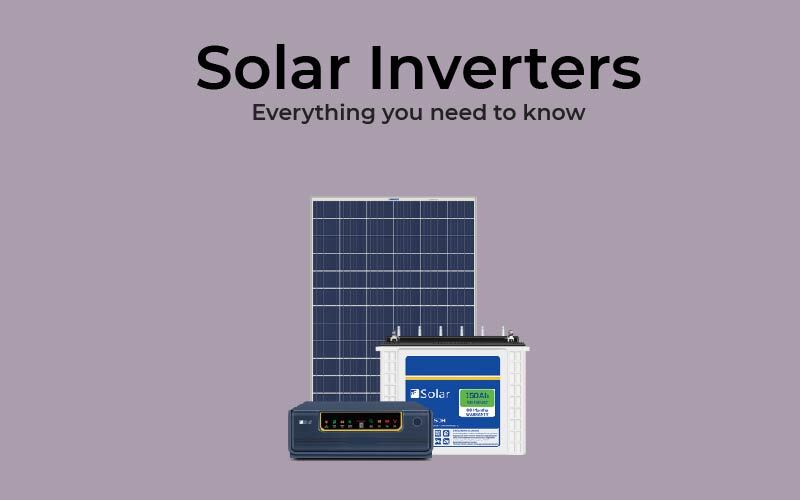A solar inverter is a critical component of BOS- Balance of System, which includes all components apart from the Photovoltaic panels. It includes wiring, switches, mounting system, Solar inverters, a battery bank and a battery charger, depending on the type of system being used by the consumer. The Inverter’s job is to convert variable DC output from the PV system into utility frequency Alternating Current which can be used to power your Appliances and send extra power to the grid once again depending on the system you have installed.
Solar Inverters fall into 3 broad categories
- Stand Alone
- Grid-tie
- Battery Backup
A fourth type- Intelligent Hybrid Inverter has entered the market recently.
Stand Alone Inverters: These inverters aren’t connected to the PV Panels, instead they draw power from batteries which are charged by the Solar panels. Some of these also possess battery chargers which help charge the batteries from an AC source whenever possible. Since they aren’t connected to the grid they do not require anti-islanding
Grid-Tie: These inverters match the phase alongside a utility charged sine wave. They are programmed to turn off during a power outage and hence cannot provide power backup in case of grid failure.Now since the inverter is connected to the grid there will be a problem of islanding, a scenario where the inverter keeps drawing power even when the grid is offline caused by load circuits resonating in the system. Therefore these systems need anti-islanding protection unlike stand alone inverters
Battery Backup: These inverters draw their power from batteries and manage the battery charge using an onboard charger while supplying the excess power to the grid. They can also supply power to critical components during a power outage. Since they are connected to the grid they require anti-islanding protection as well.
All of these inverters function based on Maximum Power Point Tracking, a technique used to maximise power output under all conditions. Power transfer from a PV panel depends on two metrics – Amount of sunlight the panels receive and Load Characteristics. Now as the sunlight varies, the load characteristics changes to provide highest efficiency, this is called the MPP or Maximum Power Point. The process of finding out the maximum power point or the MPP for a system to maintain highest efficiency with a change in external conditions is MPPT or Maximum Power Point Tracking.
Most companies are using one MPPT for the entire PV panel, which may not be effective given partial shading and other factors which could change the MPP for an individual module. Some companies have come up with power optimizers which have a MPPT for each module thus significantly improving the efficiency as the system functions at peak efficiency despite uneven shading or electrical mismatch.
Do give our blog a read for all your solar-related questions. You can also check out other interesting updates on solar on our Facebook page (facebook.com/zunroof)
Reach out to us by filling the form below:

